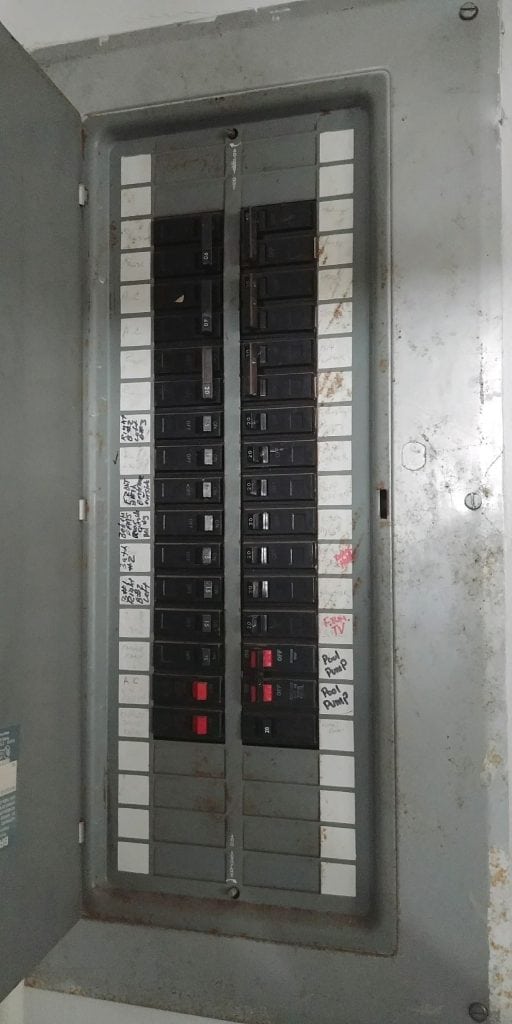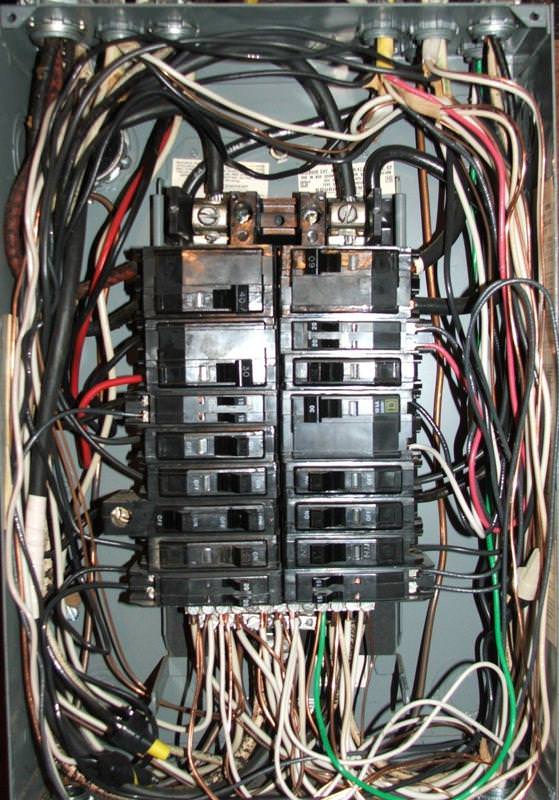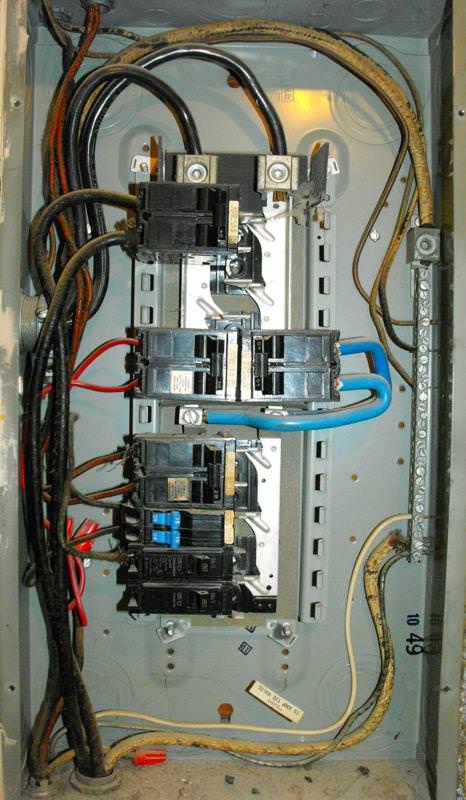
Doesn’t the Electrical Service Panel HAVE to have a Main Disconnect Breaker?”

The simple answer to this question is, “No—Probably not.”
Because most electrical service panels are NOT installed by homeowners or “Uncle Harry,” it is actually pretty rare to find a main panel without a main disconnect. There are a couple of ways where it might “appear” to be missing—but is in fact there after all. My goal is to keep this post simple enough that most readers can understand what I am talking about.
Real estate agents and home owners need to understand the basic principles so that when the inspector calls for replacement of what appears to be a perfectly good panel, they can understand why.
The first point I will make is that ALL electrical services to the home MUST have a means of shutting off all the power.
Being able to shut off all of the power is usually achieved by a Main Disconnect Breaker in the electrical service panel—and should be labeled as such. (I am not going to talk about fuses in this post). Where it gets a little confusing is when that main disconnect breaker is in a different location from the panel in the home—like outside the home at the electric meter (as in mobile homes, townhouses, condos and other instances). In these instances the panel in the home is not the electrical service equipment but is instead called a sub-panel. This type of panel doesn’t “require” a main breaker unless it is in a detached structure. Of course it does no harm to have one and one is often installed for convenience.
The following picture is of a pretty close to correctly wired sub-panel. As a Seattle Home Inspector I love finding panels this nicely wired. This type of panel will not usually have a main disconnect—it will be located at the electrical service equipment—-typically where the meters are located.

There is another type of panel that looks, at first glance, like it might be missing a main breaker. This type of panel is configured such that it takes a maximum of 6 throws to shut all the power off.
This type of Service Panel is called a Split-Bus Panel.
The following picture is of a typical split bus panel with its dead-front cover in place. Notice it says, “SERVICE DISCONNECTS” in the center between the upper breakers?

This means that when all those top breakers are turned off—all power to the breakers in the panel will be off—including the lower breakers.
The next picture is of a split bus panel with the cover off—notice how much it looks like the sub-panel picture above (well except for neatness)?

What is different about the panels can be visualized by by the following picture with descriptive overlays.

The blue dotted lines are where the power coming into the panel attach to the bus bars. Note that the top six double pole breaker spaces are outlined with blue dotted lines and are numbered 1 through 6. Note how the wires from breaker #2 travel down behind the six spaces and attach (trust me) to the bars for the bottom breakers highlighted in red. Notice also that some of the double pole breakers in the area labeled “Service Disconnects” have been changed to single pole breakers—violating the 6 throw rule. Violations of this type are common with these panels as more circuits are desired and there just isn’t room in the panel for any more.
Here is another panel with only three double pole breakers in the top six spaces but one of them has blue wires that run to the bus bars for the lower circuits.

In this case it only takes three throws to shut off all the power in the panel—still well under the 6 throw rule.
These panels were common into the early 70’s and I still find them very often. Most panel manufacturers made such panels—-and in many different versions. The code allows for this type of panel as long as all the power can be shut-off in 6 throws or less—known as the “6-Throw Rule.” Inspectors and homeowners sometimes mistake these split-bus panels for sub-panels and incorrectly call for repairs to the way they are wired—or wonder where the main breaker is. I don’t want to go into the differences between how service panels are wired differently from sub-panels, but just understand that they are wired VERY differently and it important for the home inspector to know these differences.
To recap:
In a typical split bus panel found in a residence there will be provision for “6” double pole breakers (or less)—one of which is the disconnect for all the breakers located below the 6 double pole breaker locations. Wires will run from that one breaker and be connected directly to the bus bars for the other section of breakers. (Bus bars are the energized metal bars that the circuit breakers connect to.)
These panels are often crowded and no longer have ample space to accommodate modern wiring requirements. Most of the time I find myself recommending to my buyers that they upgrade these panels. Often the service size itself is adequate for the home—the panel simply lacks the space to add new circuits. Replacing just the panel is almost always going to be cheaper than a whole new service to the home.
Charles Buell, Seattle Home Inspector
If you enjoyed this post, and would like to get notices of new posts to my blog, please subscribe via email in the little box to the right. I promise NO spamming of your email